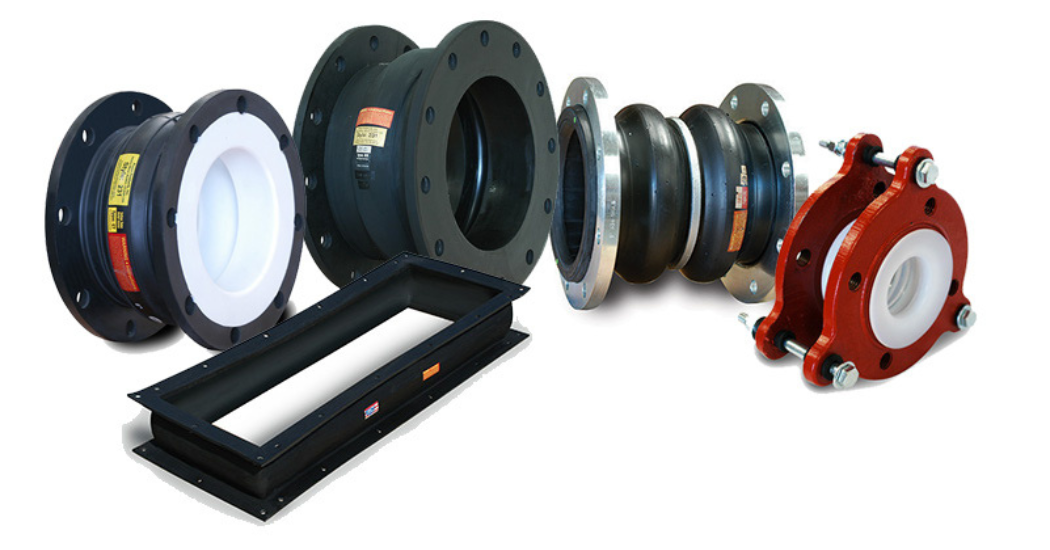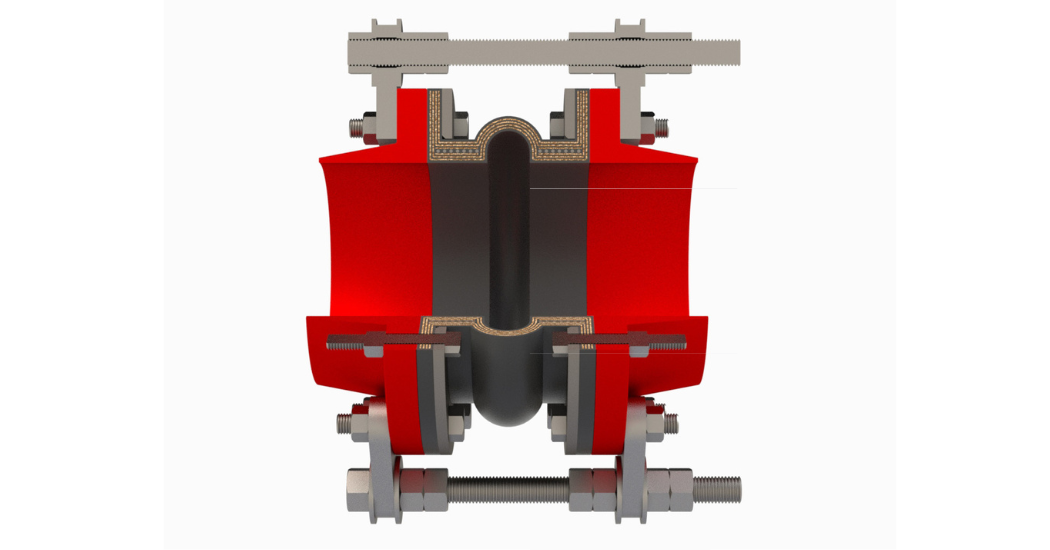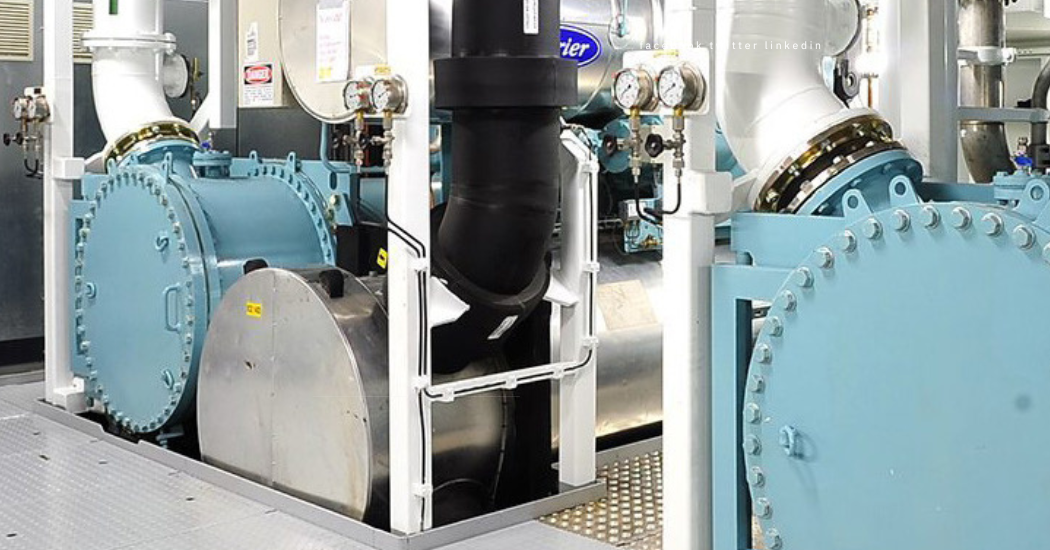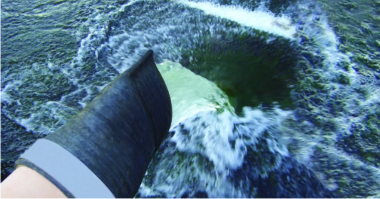Expansion joints are flexible connectors used in the piping systems of numerous industries. Their main purpose is to allow for movement and flexibility. Some expansion joints also provide sound dampening and assist with minimizing vibration. Knowing the proper style, material, and location of expansion joints is critical to their performance and lifespan. In this FAQ Eric Blazej of Proco Products will address some of the most important factors for the successful use of expansion joints.
Where are expansion joints typically used?
The most common location for expansion joints is on the suction and discharge side of every pump. They can also be found near mechanical equipment such as boilers, heat exchangers, tanks, cooling towers, or in the middle of longer pipe runs to allow for growth or contraction of the pipe.
How do I know when to use rubber or stainless steel expansion joints?
The “Rule of 250” determines whether rubber or metal expansion joints are appropriate. Rubber expansion joints are preferred if the pressure is under 250 PSI and temperature is below 250° F. Stainless steel expansion joints are typically used for applications with pressures or temperatures over 250, such as steam. In some instances, PTFE or stainless steel is required when pressure or temperature is below 250. This is usually the case for a type of media that is caustic or acidic.
What types and styles are available?
Expansion joints are available in several different materials, including natural and synthetic rubber, PTFE, as well as various types of stainless steel.
Types of rubber expansion joints include spherical, spool type, wide arch, low spring rate, reducing concentric and eccentric, and PTFE lined.
Types of stainless steel expansion joints include low corrugation, externally pressurized, expansion loops, exhaust, gimbal and more.
 What are the pros of using rubber expansion joints?
What are the pros of using rubber expansion joints?
Various Elastomers
A wide variety of elastomers are available, depending on the application, media, temperature, and pressure. These elastomers include EPDM, Neoprene, Butyl, Nitrile, and Natural Rubber.
As an example, Neoprene may be used for water at 212° F, however, at 220° F EPDM or butyl is a better option. Not only does each elastomer have a specified temperature, it also has its own properties for chemical compatibility, abrasion resistance, ability to handle heat and cold, exposure to sunlight and the elements, and more.
 Many Types of Rubber Expansion Joints
Many Types of Rubber Expansion Joints
Spool type expansion joints are hand built or hand wrapped. Spool type joints can have filled arches, which are best for heavy-duty applications like wastewater plants or pulp mills. Filled arch should be used when 20% or more solids are present in the media. Note: This reduces movement by half.
Spherical expansion joints are molded. Common applications include water, oil and gas, mining, automotive, and HVAC. Spherical expansion joints cannot have filled arches. Spherical style expansion joints also have floating flanges for easy installation.
 Spherical joints can handle higher pressure ratings than spool type expansion joints. However, spool type joints provide more movement because they have a wider arch. Low spring rate expansion joints are also available for PVC, CPVC, FRP, and HPDE piping. Plastic piping cannot handle the same force as a standard carbon steel piping system; therefore, a low spring rate joint is required to avoid catastrophic failure.
Spherical joints can handle higher pressure ratings than spool type expansion joints. However, spool type joints provide more movement because they have a wider arch. Low spring rate expansion joints are also available for PVC, CPVC, FRP, and HPDE piping. Plastic piping cannot handle the same force as a standard carbon steel piping system; therefore, a low spring rate joint is required to avoid catastrophic failure.
Concentric and eccentric expansion joints are also available for applications where the size of the pipe does not match the mating equipment. A reducing spool piece is no longer required. PTFE expansion joints can also be used for aggressive media.
 What factors should be considered when choosing the right style or material for expansion joints?
What factors should be considered when choosing the right style or material for expansion joints?
Nearly all industries, whether HVAC or Industrial use the acronym STAMPED to help specify the various expansion joints for a particular system:
S T A M P E D
Size- What is the pipe diameter?
Temperature- What is the temperature range of the media? What is the temperature range if the piping system is located outdoors?
Application- In which industry will the expansion joints be used? What media is being transported through the pipe?
Movement- What is the expected movement at specific locations the piping system? Consider compression, extension, and lateral.
Pressure- What is the maximum pressure? Note: Calculate using test pressure.
End Fittings- What type and configuration are the end fittings to which the expansion joints will connect?
Delivery- How quickly is the product needed?
Using the STAMPED criteria, Proco can select the best product for the customer to optimize expansion joint performance and longevity.
What is the average lifespan of rubber expansion joints?
The average life span of a rubber expansion joint is 7 to 10 years. Some expansion joints, depending on application, will last 6 months. Some will last 25-30 years.
When do I know to replace them?
Some factors include cracking or tearing, discoloration, over-extension or compression, and hardening of the bellows.
Proco Products offers a FREE on-site inspection or expansion joint survey. This process includes a list of all expansion joints at the facility, all important information (STAMPED), provides a detailed report with pictures, and offers special discounted pricing. This process is pro-active instead of reactive and helps catch failures before they happen to optimize output and reduce downtime.
What about delivery time for rubber expansion joints?
Many companies are experiencing supply chain issues due to the cargo shortage. Fortunately, Proco Products prepared for this. Proco has the largest inventory in North America, with over $3 million in inventory on the shelf and quick delivery times. Three stocking locations include California, Texas, and Georgia.
What if I need help with selection of expansion joints?
With an experienced inside sales staff and in-house engineering team, Proco Products is ready to assist with all your rubber and ducting expansion joint needs.
Originally Publish on P.I. Process Instrumentation





Comments